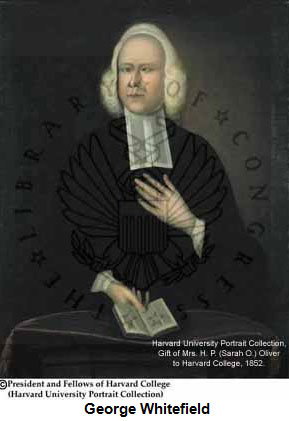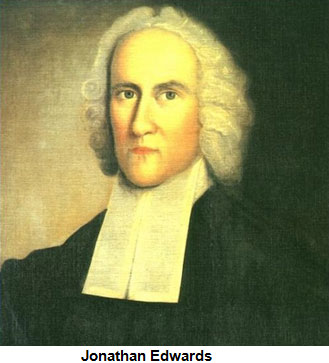In the late 1730s, George Whitefield, an emotional and theatrical English evangelist, visited America several times, preaching to people during the Great Awakening. One of Whitefield's sermons attracted about 30,000 people.

Religion in the 18th century was a major component of American life. Between 1700 and 1740, about 75 to 80 percent of the population attended church. Sometime in the 1730s, a new religious movement began. An English preacher named George Whitefield came to America and began to give fiery, spellbinding sermons with the purpose of converting people. He wanted to convert (change) people from a life of sin and give them salvation through a "new birth." This religious movement was called the Great Awakening.
In the late 1730s, George Whitefield, an emotional and theatrical English evangelist, visited America several times, preaching to people during the Great Awakening. One of Whitefield's sermons attracted about 30,000 people.

The conversion of sinners was done through a series of evangelical sermons and outdoor revivals so that he and others who joined him could reach the masses. He was able to convert thousands of people, including American Indians and slaves, most of whom were Christians by the end of the century.
The Great Awakening spread throughout the American colonies and across the Atlantic to places like England and Scotland. While the Great Awakening was supported by some churches, there were others who opposed it.
Supporters of the Awakening |
Opponents of the Awakening |
|
|

Jonathan Edwards was the most important American preacher during the Great Awakening. He used the fear of divine punishment as a way to convert his audiences. Edwards was more intellectual than most preachers of the Great Awakening. He wrote essays and narratives that inspired many people during this religious awakening.
Sources of images used for this section as they appear, top to bottom: